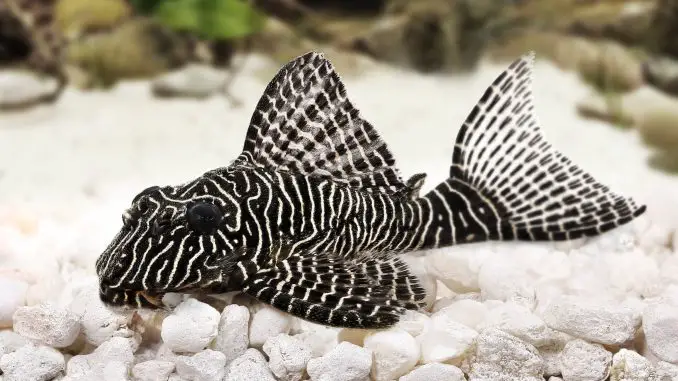
The zebra pleco is one of the more eye-catching catfish species around, sporting a remarkable black and white striped pattern (guess how it gets its name!)
Unfortunately, these unique plecos are also an endangered species, due to the detrimental effects of human-made dams on their natural habitat of Brazil.
Because the Zebra Plecos are so rare, they are also one of the pricier aquarium fish you can buy. And because they’re stunning, you want to make sure you get the best tips on proper care for these precious suckermouth beauties.
Look no further — we have you covered with best practices for the care of your Zebra Pleco, including diet, habitat and water conditions, breeding, and perhaps most importantly, tankmates, as these zebras are a little picky about who they want to hang out with them in their aquarium zoo.
TABLE OF CONTENTS
Zebra Pleco Facts & Overview
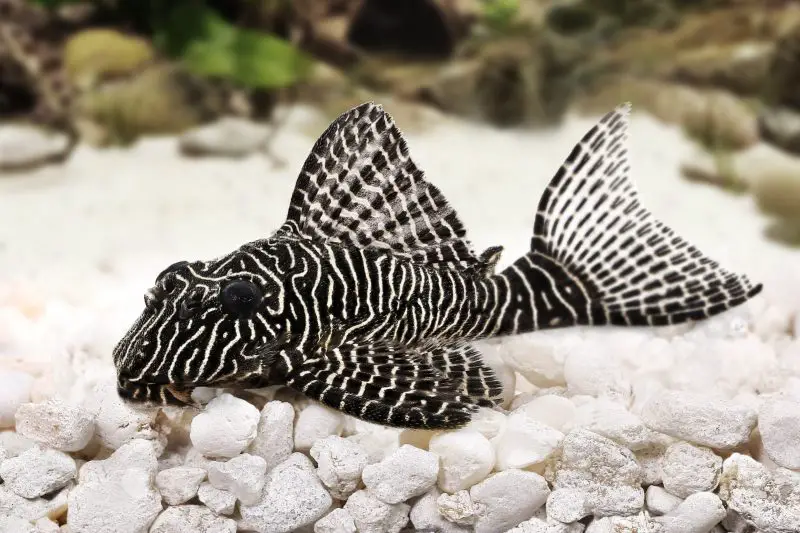
| Category | Rating |
| Care Level: | Easy to medium |
| Temperament: | Territorial but peaceful |
| Color: | Black and white |
| Lifespan: | 10-15 years |
| Size: | 3-4 inches |
| Diet: | Omnivore |
| Family: | Loricariidae |
| Minimum Tank Size: | 30 gallons |
| Tank Setup: | Freshwater with a strong current |
| Compatibility: | Peaceful community |
A native of Brazil, the Zebra Pleco is found in the Xingu River, which is a tributary of the Amazon River. Although they call the Big Bend area of the Xingu home, Zebra Plecos are sadly dwindling in numbers due to an extreme reduction in their water flow.
These freshwater Zebra Plecos thrive when there is a strong current (we’ll talk about that more when we get to tank and water conditions); however, when the Belo Monte Dam was built in the Xingu, the reduction of water flow from the dam proved deadly to the Zebra Plecos.
Now the Brazilian government has banned the export of the Zebra Plecos (scientific name Hypancistrus zebra). That’s why you want to make sure that any Zebra Pleco you purchase for your home aquarium has been bred in captivity.
In fact, there are several captive breeding programs in Brazil, although you still won’t be able to get a Zebra Pleco that was bred in Brazil since the government is trying to replenish the Zebra Pleco community that was diminished by the building of the dam.
It is difficult to digest how quickly the Zebra Pleco has become endangered, especially when you consider that this species is relatively new to the aquarium world, having first been identified in the early 1990s.
Zebra Plecos, as you can imagine, are named for their distinct black and white stripes that are similar to a zebra. Because of their unique appearance, they quickly became popular aquarium fish and were widely exported from Brazil. Now that it is on the IBAMA list of endangered species, your aquarium Zebra Pleco will have to come from captive breeding outside Brazil.
The Zebra Pleco, also known as the Imperial Pleco, is a bottom feeder that has the trademark catfish suckermouth and bony plates; however, the Zebra Pleco is no normal catfish. Unlike typical loricariids, the Zebra Pleco is a peaceful fish that is smaller and also eats meatier foods. And while all creatures are beautiful in their own right, the Zebra Pleco is empirically one of the more attractive catfish.
Don’t be surprised if your Zebra Pleco spends time hiding in the tank–they are nocturnal, so you won’t see them much during the day, and they’re also shy. Read on to find out more about their behaviors.
Typical Behavior
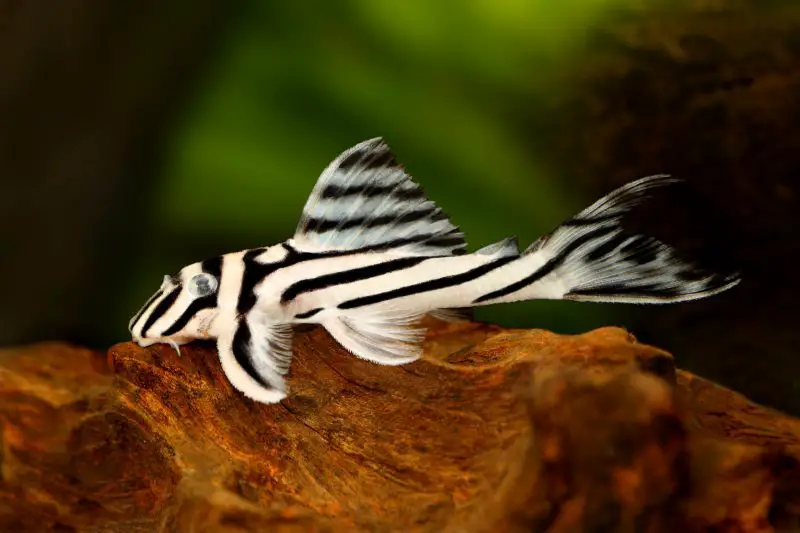
As we mentioned, Zebra Plecos are one of the more introverted species, so you may not see them too often. When you do see them, however, you won’t be disappointed! If you’re a night owl, you will get to enjoy watching the Zebra Pleco exploring the tank and scavenging for a snack.
They’ll be happy if you give them places to hide — adding some caves in your home aquarium will allow them to hide and stay out of the fray, which will also improve their quality of life and ensure that you can enjoy your Zebra Pleco for a full 10 to 15 years.
More hiding places equal non-stressed Zebra Plecos, and the absence of stress increases lifespan.
Despite being timid and preferring to stay out of the way, Zebra Plecos are fairly territorial, especially with their own. It’s particularly a gender issue, with male Zebra Plecos carrying the tendency for fighting.
Because of this proclivity, it’s best to have a larger tank if you’re housing multiple male Zebra Plecos. They’re less likely to battle if they each have their own territory, with their own hiding spaces and cave.
Sometimes this territorialism comes in handy, as it is the males who guard the Zebra Pleco eggs after they have been spawned.
Appearance
At full maturity, Zebra Plecos reach about 3-4 inches (7.6-10.2 cm) in length. They’re smaller than some of the other plecos out there, which might explain why they shy away from crowds.
The most significant aspect of their appearance is the black and white lateral striped pattern that inspired their name. With ideal lighting, their stripes really pop and shine, bringing vibrancy and life to your community aquarium. The stripe pattern is evident even in the Zebra Pleco fry.
In addition to those sparkly stripes, the Zebra Pleco has the expected sucker mouth and flat bottom of other plecos. And of course, the four whiskers are distinctly catfish (they use those to explore their environment.)
Small mouth: Although these fish have the trademark suckermouth, it’s important to remember that the Zebra Pleco has a much smaller mouth than other catfish, which will affect how you feed them. We’ll cover that in the “Diet” section.
The Zebra Pleco’s big, bulgy eyes also make them stand out in a crowd. There’s quite a bit of fin fare with these catfish–their dorsal fin is a triangle and stands up tall, but they can lay it down when they want. On the side of their body, they also have two sets of pectoral fins, and a set of rayed fins, which are pretty large.
Fun fact: If you look closely, you can see that the pectoral fins closest to the Zebra Pleco’s head are hairy.
If you’re hoping to distinguish between your male and female Zebra Pleco, it won’t be easy. But the males have a wider and larger head, and the hair on those pectoral fins is more visible on the males.
Habitat and Tank Conditions
The Zebra Pleco is not the easiest fish to keep as it requires a strong, fast-moving current similar to its native habitat. Remember that the reason the Zebra Pleco is endangered in its indigenous environment is that the building of the dam stopped the natural current. Therefore, it’s very important to recreate the habitat and water conditions of the Xingu River.
For substrate, use smooth sand or gravel and pebbles, and add boulders and rocks to help them find places to hide. Keep in mind that because the Zebra Pleco is a bottom feeder, you need to make sure whatever you add is smooth — anything with a rough or jagged edge could injure your precious pleco.
You can also add store-bought caves to create more hiding spaces, but make sure that you quarantine anything new before introducing it into your aquarium. The same is true for plants — Zebra Plecos will appreciate aquatic plants, and are not picky about what kind of plants you choose; just confirm the integrity of the plant by quarantining in advance.
As nocturnal fish, Zebra Plecos prefer low light. If you have an aquarium light, make sure to turn it off at night when the Zebra Plecos come out to play.
Although Zebra Plecos are smaller than the traditional catfish, they still need enough space to swim and stake out their territory. You’ll need a minimum tank size of 20 gallons, upgrading the real estate if you’re housing multiples, or creating a community tank.
Water Conditions
To keep your Zebra Plecos happy and thriving, you’ll need highly oxygenated water and a strong current. Zebra Plecos have a wide range of acceptable water parameters, but they do prefer warmer water that is not too acidic nor alkaline.
Here are the optimal parameters for Zebra Plecos:
- Temperature: 79°F to 88°F (26.1°C to 31.1°C)
- pH level: 6.5 to 7.0
- Water hardness: 2 to 6 KH
Although we’re showing a wide range, Zebra Plecos are sensitive to changes, so be sure to monitor conditions and test the water regularly.
Another consideration is cleanliness. It’s imperative to keep the Zebra Pleco’s tank pristine. They are unable to tolerate dirty tank conditions and will become stressed and more susceptible to disease.
Regular water changes and cleaning, as well as good aeration and a strong current, will ensure that your Zebra Pleco is able to reach the top of its life expectancy.
What Size Aquarium Do They Need?
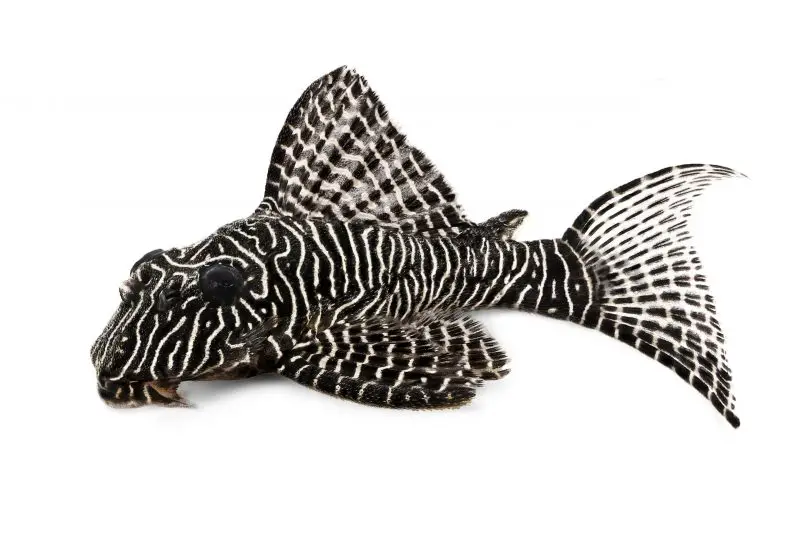
You’ll need at least a 20-gallon tank for one Zebra Pleco, although 30 gallons is ideal. You’ll need a larger tank if you are hosting multiple Zebra Plecos, or if the Zebra Plecos are the beginning of a community tank, or if you are adding them to an existing community.
Tank Mates
The best tank mates for Zebra Plecos are those that are non-aggressive; they really don’t like to have to compete for food and space.
Because they are bottom feeders, it is best to pair them with fish that inhabit the middle and top sections of the aquarium. Avoid placing bottom-dwellers that are larger and more active than the Zebra Plecos.
Other considerations include size: you want to choose fish that are comparable in size, keeping in mind that Zebra Plecos are on the smaller side compared to other catfish.
Also, be mindful of the needs of the other fish; you need a strong current for the Zebra Plecos, so don’t pair them with fish that cannot handle the strong current, or that fish is stressed and endangered.
Suitable Tankmates
- Apistogramma
- Bumblebee Goby
- Cardinal Tetra
- Celestial Pearl Danios
- Cherry Barb
- Cherry Shrimp
- Cory Catfish
- Denison Barb
- Ember Tetra (or other tetras)
- Harlequin Rasbora
- Kuhli Loach
- Phantom Tetra
- Platies
- Snails
- Zebra Otocinclus
Unsuitable Tankmates
Cardinals
- Endlers
- Hatchetfish
- Rainbowfish
- Threadfins
Keeping Zebra Plecos Together
There are conflicting schools of thought on keeping Zebra Plecos together. Some aquarists report having 20-30 Zebra Pleco in a 75-gallon tank, yet others say one Zebra Pleco is the way to go since they are so territorial.
We recommend that if you’re thinking about multiples, exercise caution by incorporating males and females and making sure that
- the males have enough space to claim their territory and stay out of each other’s way and
- multiple males are not fighting over one female.
Diet
Zebra Plecos are predatory fish and need lots of protein. That said, they are not super aggressive about going after their food, so you want to make sure that they are not competing with other fish that are more aggressive about food than they are. If that is the case, your Zebra Pleco will have a shortage of food.
Because these fish are not aggressive eaters, choose a quiet spot in the aquarium for feeding them — they’ll feel safer and less stressed, and you can ensure that they are getting sufficient nutrition to keep them healthy.
Zebra Plecos do eat more meat than other types of catfish. They’ll appreciate live bloodworms (although they’ll gladly accept frozen and freeze-dried). They also like small invertebrates, and you should also provide dried foods that are packed with protein. Brine shrimp are a popular Zebra Pleco choice.
Although they will eat algae and some vegetables (try cucumbers), protein is the basis of their diet. Keep in mind, too, that they have incredibly small mouths, and won’t be able to handle vegetation and vegetables that are too large.
If you’re going with fish food, stick with pellets rather than flakes since they are hanging out at the bottom of the tank.
Here’s a list of acceptable foods for Zebra Plecos. Variety is great, but the bulk of their food should be meat:
- Algae wafers
- Bloodworms
- Brine Shrimp
- Crushed Peas
- Cucumbers
- Pellets
- Zucchini
Care
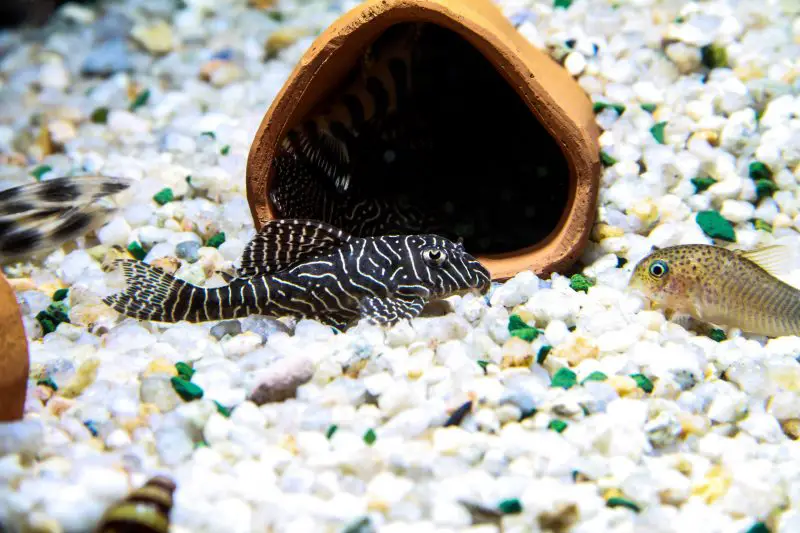
- Pretty Pleco Hypancistrus sp. L333
Fungal and bacterial infections, as well as the parasite ich, are all maladies that freshwater fish, including Zebra Plecos, are in danger of contracting.
However, you have the power to greatly reduce the rate of disease and illness if you care for your Zebra Plecos and their tank properly. As we mentioned before, Zebra Plecos are highly sensitive to dirty water and will get sick or die if they are not provided with pristine conditions.
You should do regular water checks, change out water weekly (20% percent), and get a decent filter. The filter will keep the water clean and aerated, and also give the Zebra Plecos the strong current they need to thrive and reach their full life potential.
In the event that your Zebra Pleco gets sick, quarantine them immediately, treating them with over the counter medication. Always choose medication without copper, as Zebra Plecos are intolerant of copper.
Breeding
If you want to breed Zebra Plecos, it’s not a super difficult process. You can encourage breeding by raising the water temperature to about 82°F (27.8°C) and increasing the oxygen level in the tank.
The female will have about 15 eggs. You’ll know that the male is ready to spawn when you see spikes protruding from the first ray of the pectoral fin.
When that happens, the male traps the female in a cave until she lays her eggs. If she tries to leave, the male will bite her into submission. This process, barbaric as it may sound, is common among plecos. Depending on how much the female complains, the process lasts anywhere between 1 and 5 days.
After the female lays her eggs, the male will fertilize the eggs, at which point the female leaves the cave, and the male keeps watch over the eggs until they hatch (remember we talked about territorialism? Here’s where it comes in handy.)
The eggs hatch between 3 to 7 days after being fertilized, and the male will stay and look after the little fry for a few days. The fry has a little yolk sac under their bellies that will disappear in a few days. Once that happens, you can start feeding them powdered fry food until they are big enough to handle baby brine shrimp.
After two or three months, they will look like mini versions of their parents, stripes and all.
Are Zebra Pleco Suitable for your Aquarium?
If you have a few extra dollars in your pocket and want a showstopper for your aquarium, look no further than the Zebra Pleco. Its signature stripe pattern and nocturnal antics will keep you spellbound.
If you’re willing to take on the task of keeping a pristine tank with a strong current to keep your Zebra Pleco happy and healthy, this catfish may be the one for you.
And if you are already housing other non-aggressive fish and want to add to your flock, the Zebra Pleco may be a good fit for your community aquarium.
FAQ
My other plecos eat lots of algae. Will that be enough nutrition for my Zebra Pleco?
Algae can be one component of your Zebra Pleco’s diet, but the bulk of the Zebra Pleco’s diet should be protein. They are meat-eaters and predators (although admittedly, they’re not aggressive eaters.) They need fresh, frozen, and freeze-dried sources of protein to keep them at optimal health.
They particularly prefer bloodworms, and also enjoy brine shrimp and other small invertebrates.
If you’re looking for sources of green, they also like cucumbers, crushed peas, and zucchini, but again, that’s the side; protein should be the main dish.
The most important thing to remember when choosing food for Zebra Plecos is that they have incredibly small mouths and therefore cannot handle large pieces.
Do I need to have a separate breeding tank?
No, you don’t need a separate breeding tank. Actually, we don’t recommend moving Zebra Plecos at all (unless, of course, they’re sick and you need to quarantine them.) Instead, when you want to encourage breeding, just turn up the heat in the aquarium to 82°F (27.8°C) and increase the oxygen flow by adding airstones, an extra filter, or a powerhead.
The temperature and oxygen rise will spur the female to egg production. Zebra Plecos need a cave for the breeding process (the female lays the eggs in the cave and the male then fertilizes the eggs and watches over them), but if you have Zebra Plecos in your tank, then you already have caves.
You’ll want to make sure that after the eggs hatch, the fry are protected from other fish and that they get enough food, so make sure they have dedicated tank space.
Additionally, if you’re welcoming in 15 new Zebra Pleco fry, you want to make sure that your tank is large enough to accommodate everybody.
I’m just starting my first aquarium. Would Zebra Plecos be a good choice?
What great news that you’re starting your fish hobby! We know you’ll find it fulfilling and enjoyable. Zebra Plecos would not be our first choice if you’re just getting started. There are certain tank conditions that need to be maintained that might be more difficult for a novice — they need a strong current like that of their native Rio Xingu in Brazil. They also need a tank that is meticulously kept and frequent water changes. If you’re a novice and want to start with this beautiful catfish, we recommend that you start with one in a non-community tank.
What is the average lifespan for Zebra Pleco?
Zebra Pleco has a relatively long lifespan in the aquarium world. Given healthy tank conditions, these beautiful fish should live from 10-15 years.
How long does the female Zebra Pleco carry her eggs?
Actually, the female Zebra Pleco’s eggs are fertilized by the male after she lays them. Laying approximately 15 eggs in a cave is the extent of the female Zebra Pleco’s parenting.

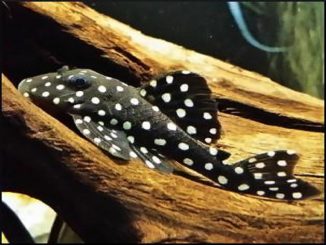
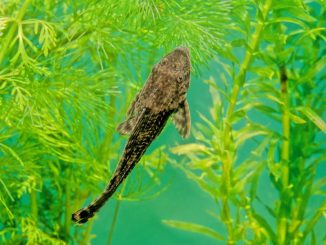
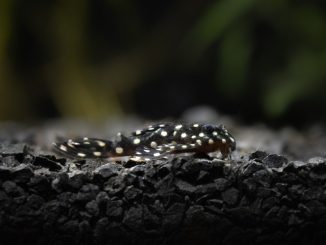
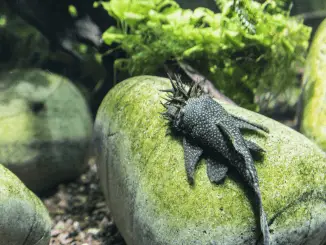
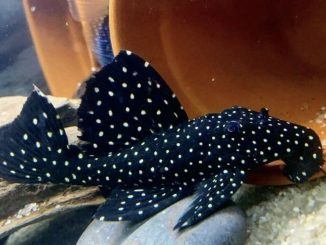
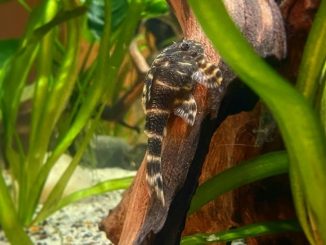
Be the first to comment